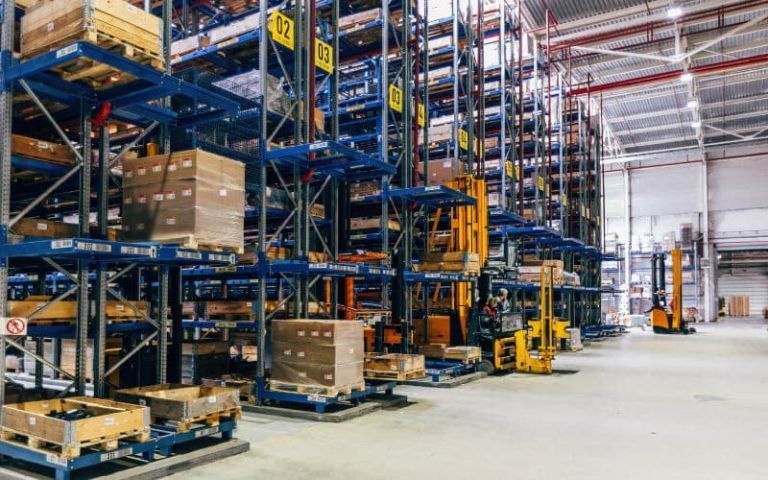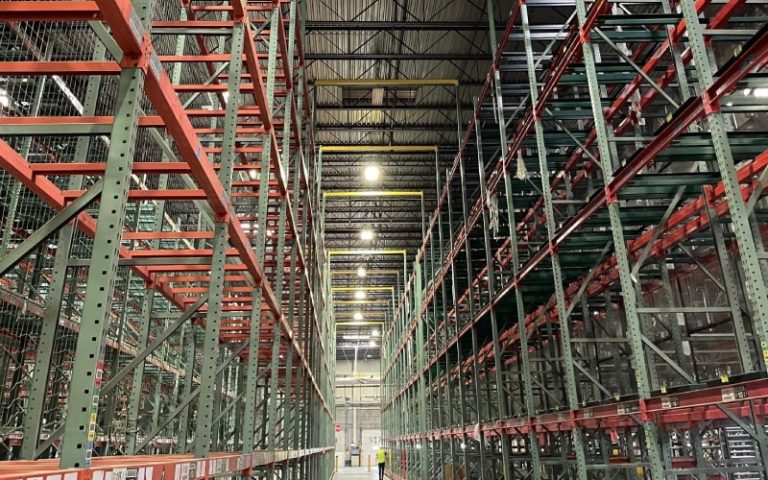The Modern Materials Handling 2025 Automation Survey of warehouses and distribution centers showed that operators are focused on two key areas this year:
- Improve capacity utilization (67%)
- Improve accuracy (58%)
These are just two of the areas where the right material movement equipment and material handling equipment can be a difference maker. Add in increases in productivity, safety, and throughput, and you can dramatically upgrade your operations.
But it can be complex. You need th/blog/ultimate-guide-buying-mhee right warehouse machines that fit your needs and layout.
Before Making an Investment in Material Movement Equipment
Before investing in warehouse machines, there are a few steps to take. It starts with a clear understanding of your operational needs, such as:
- Warehouse layout: The size, shape, and design of your facility will influence which equipment is most suitable. Narrow aisles, high storage racks, or multiple levels may require specialized solutions.
- Types of goods: Are you handling heavy pallets, fragile items, or bulk materials? The weight, size, and fragility of your products dictate the type of equipment needed.
- Volume of movement: High-volume operations benefit from automated systems like conveyors, while smaller-scale warehouses may rely on forklifts or hand trucks.
Once you assess these factors, you can move on to exploring equipment options.
Types of Material Movement Equipment
You need the right combination of pallet racks and warehouse machines for efficient material movement. Here are some of the most common equipment used in modern warehouses.
Manual Material Handling Equipment
- Hand trucks and dollies: Ideal for moving small loads, boxes, and individual items over short distances.
- Pallet jacks: A cost-effective solution for lifting and transporting pallets in warehouses without using forklifts.
- Lift tables: Used to raise materials to a comfortable working height, reducing strain on workers.
Forklifts and Lift Trucks
- Counterbalance forklifts: The most common type, designed for moving pallets in open warehouse spaces.
- Reach trucks: Designed for narrow aisles and high shelving units.
- Order pickers: Used in warehouses with high-volume order fulfillment, allowing workers to retrieve items at various heights.
- Pallet stackers: A more affordable alternative to forklifts for stacking and organizing palletized goods.
Conveyor Systems
- Gravity conveyors: Utilize gravity to move items and require no power source—ideal for lightweight loads.
- Belt conveyors: Move items at a controlled speed and are perfect for fragile or irregularly shaped goods.
- Roller conveyors: Use rollers to transport heavier loads, often found in distribution centers.
- Automated conveyor systems: Powered solutions that integrate with a warehouse management system (WMS) to streamline operations.
- Telescopic conveyors: Expandable conveyor systems used for loading/unloading trucks and containers, adjusting to different depths as needed.
Automated Guided Vehicles (AGVs) and Autonomous Mobile Robots (AMRs)
- AGVs: Follow pre-programmed paths and are ideal for repetitive transportation tasks.
- AMRs: Use sensors and AI to navigate warehouse environments independently, offering flexibility and adaptability.
Overhead Lifting Equipment
- Cranes and hoists: Ideal for moving large loads that cannot be transported by a forklift.
- Monorail systems: Used in manufacturing warehouses to transport items along a fixed track.
Other Material Handling Equipment
- Automated storage and retrieval systems (AS/RS): Computer-controlled systems that automatically place and retrieve loads to maximize vertical space utilization
- Dynamic pick modules: Multi-level picking systems that combine conveyors, flow racks, and walkways for high-density storage.
- Vertical lift modules (VLMs): Enclosed systems with vertically arranged trays that deliver items to pick windows.
- Carousels: Rotating storage systems that bring items to the operator, reducing travel time.
- Sortation systems: Automated equipment that directs items to specific destinations based on criteria.
- Cross-docking systems: Equipment setups that facilitate the direct transfer of goods from inbound to outbound transportation with minimal storage time.
Focus on Total Cost of Ownership
When selecting material movement equipment for your warehouse, you need to look beyond the initial purchase price. The total cost of ownership (TCO) provides a more accurate picture of your investment over its lifetime.
Acquisition vs. Operational Costs
The initial purchase or lease represents only a fraction of what you’ll spend throughout the equipment’s lifecycle. Consider installation expenses, training requirements, and integration with existing systems. While automated solutions may have higher upfront costs, they can significantly reduce labor costs and improve productivity.
Maintenance and Reliability Factors
Better reliability records and easier-to-service components minimize downtime. Consider manufacturer warranty terms, availability of parts, and reputation for durability when evaluating different options.
Energy and Resource Efficiency
Power consumption can eat up to 15% of your budget, so choose wisely. Electric forklifts may cost more initially than propane models but often prove more economical over time through lower energy costs and reduced emissions. For automated systems, check energy usage during both active operation and standby periods.
Space Utilization and Scalability
Utilizing equipment that maximizes vertical space or operates in narrower aisles can dramatically increase your storage capacity. Consider how adaptable the equipment will be as your business grows. Modular systems that can be expanded or reconfigured offer better long-term value than fixed solutions that may require complete replacement.
Find the Right Material Moving Equipment
As you can see, there’s a lot to choose from, and investing in the wrong equipment can be an expensive mistake. The material handling equipment experts at Conesco Storage Systems can help you find exactly what you need, with a large selection of new and used material handling equipment and decades of experience in efficient warehouse planning and installation.
Contact Conesco Storage Systems today for a free consultation.



